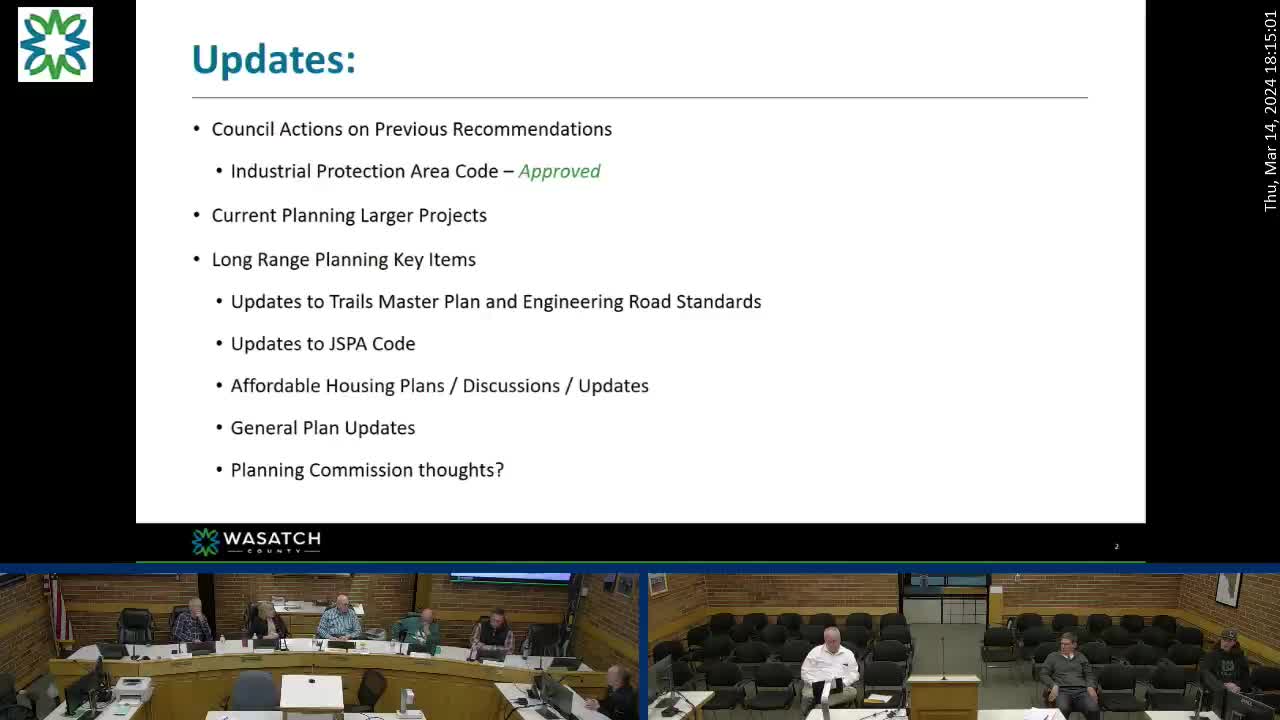Bypass project faces delays amid rising traffic concerns
March 14, 2024 | Wasatch County Planning Commission, Wasatch County Commission, Wasatch County Commission and Boards, Wasatch County, Utah

This article was created by AI summarizing key points discussed. AI makes mistakes, so for full details and context, please refer to the video of the full meeting. Please report any errors so we can fix them. Report an error »

During a recent government meeting, officials expressed growing concerns over the delays in the construction of a crucial bypass, which is essential for managing increasing traffic due to regional growth. The original timeline for the Environmental Impact Statement (EIS) was set for three years, concluding in June 2023. However, the Utah Department of Transportation (UDOT) has since pushed the completion date to June 2024, citing new traffic data that necessitates a reevaluation of the project.
The discussions highlighted that the traffic models used by UDOT are already indicating a failure rate, even with the proposed bypass. This alarming revelation suggests that the anticipated traffic levels will exceed the infrastructure's capacity, raising questions about the adequacy of planning in light of recent developments in local density approvals. Notably, two specific areas—the North Village in Heber City and the Mida project—are experiencing higher density approvals than previously projected, further complicating traffic forecasts.
Officials noted that the ongoing delays could extend the timeline for the bypass project to nearly five years beyond the initial estimate, with concerns that the EIS process is critical for securing funding and moving forward. The meeting underscored the long-standing nature of these discussions, with some participants recalling that plans for the bypass have been in place for over two decades, yet progress remains stagnant.
As the community grapples with these challenges, the urgency for a resolution grows, particularly with upcoming events like the Olympics potentially influencing state funding priorities. The meeting concluded with a call for continued vigilance and advocacy to ensure that the bypass project receives the attention and resources it requires to address the mounting traffic issues in the region.
The discussions highlighted that the traffic models used by UDOT are already indicating a failure rate, even with the proposed bypass. This alarming revelation suggests that the anticipated traffic levels will exceed the infrastructure's capacity, raising questions about the adequacy of planning in light of recent developments in local density approvals. Notably, two specific areas—the North Village in Heber City and the Mida project—are experiencing higher density approvals than previously projected, further complicating traffic forecasts.
Officials noted that the ongoing delays could extend the timeline for the bypass project to nearly five years beyond the initial estimate, with concerns that the EIS process is critical for securing funding and moving forward. The meeting underscored the long-standing nature of these discussions, with some participants recalling that plans for the bypass have been in place for over two decades, yet progress remains stagnant.
As the community grapples with these challenges, the urgency for a resolution grows, particularly with upcoming events like the Olympics potentially influencing state funding priorities. The meeting concluded with a call for continued vigilance and advocacy to ensure that the bypass project receives the attention and resources it requires to address the mounting traffic issues in the region.
View full meeting
This article is based on a recent meeting—watch the full video and explore the complete transcript for deeper insights into the discussion.
View full meeting

